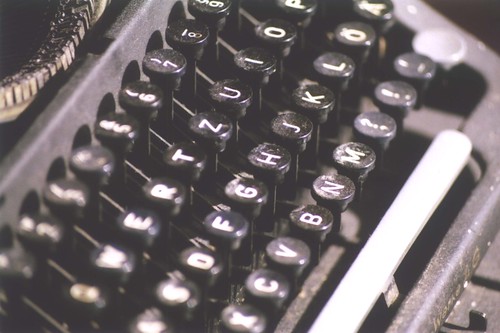From Under the Fig Tree is delighted to announce another first: a content sharing partnership (aka "cross-posting") with the Forward's culture blog, The Arty Semite and its curator, Dan Friedman, who is also the newspaper's arts and culture editor.
To mark the occasion, Menachem Wecker, a staff writer for GW Today and himself a celebrated blogger for the Houston Chronicle, has moderated a conversation between Jenna Weissman Joselit and Dan Friedman on the relationship of the academy to journalism and the arts.
 MW: Dan, as someone with a lot of experience in Jewish journalism, what are some of the challenges inherent in interviewing scholars of Jewish history or culture? Is it tough to get professors to speak in anything close to sound bites? What are some of the things you wish all Judaic studies professors hopeful of appearing in the Forward’s arts and culture section knew about your beat?
MW: Dan, as someone with a lot of experience in Jewish journalism, what are some of the challenges inherent in interviewing scholars of Jewish history or culture? Is it tough to get professors to speak in anything close to sound bites? What are some of the things you wish all Judaic studies professors hopeful of appearing in the Forward’s arts and culture section knew about your beat?
DF: Well I don't want professors to talk in sound bites, not in my section. But I think that for those professors who write for my section, it's a struggle to get the right mixture of clarity, complexity and conciseness. Coming from an academic background myself, I know that timeliness, brevity and accessibility were not particularly prized in Ph.D. programs. I wonder whether Jenna, who has written in a number of different venues, addresses questions of writing for her students.
MW: Jenna, what's your reaction?
JWJ: Like Dan, I, too, prize the three C's of writing and make a point of sharing them with my students as they work on their papers and presentations. Then again, I also make a point of staying away from the dreaded red pencil markings, which various online editing systems have imported, lest my students flee in horror. I much prefer the more gentle stylings, and nudges, of a gray lead pencil. As Dan points out, I've had the good fortune to write for a number of different venues and this, I have to say, has done wonders for my writing as well as my embrace of deadlines.
MW: Let's try a flipped version of the first question. Jenna, how willing have you found your colleagues in academia to be interviewed by reporters at Jewish publications? Do you think professors tend to see media engagement (and reaching out to the larger, non-scholarly public) as part of their teaching responsibilities? One often hears professors complain that they interview at length with a reporter only to have a sentence-or-two-long quote appear in the final story. Have you encountered this challenge in your own work, or have you heard from colleagues about this?
JWJ: Once upon a time, academics might have held the media at arm's length, but these days as the distinction between high and low culture is increasingly blurred, that's no longer the case.
In fact, many of my colleagues relish the opportunity to engage with the press. At times, admittedly, it's frustrating to speak at length and with subtlety to a reporter only to find one's pearls of wisdom variously mangled, twisted out of context and so radically truncated that you come off sounding like a drunken sailor. Still, it's a risk well worth taking.
...continue reading "Moving Forward"



 MW: Dan, as someone with a lot of experience in Jewish journalism, what are some of the challenges inherent in interviewing scholars of Jewish history or culture? Is it tough to get professors to speak in anything close to sound bites? What are some of the things you wish all Judaic studies professors hopeful of appearing in the Forward’s arts and culture section knew about your beat?
MW: Dan, as someone with a lot of experience in Jewish journalism, what are some of the challenges inherent in interviewing scholars of Jewish history or culture? Is it tough to get professors to speak in anything close to sound bites? What are some of the things you wish all Judaic studies professors hopeful of appearing in the Forward’s arts and culture section knew about your beat? 